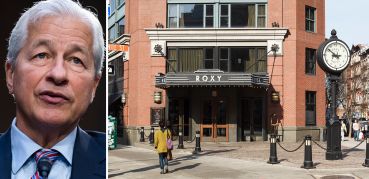Fed Pauses Interest Rates With No Signal Yet of When Cuts Begin
By Andrew Coen January 31, 2024 3:02 pm
reprints
The Federal Reserve held interest rates steady for a fourth straight meeting Wednesday and did not indicate a timetable for future cuts that could help jump-start commercial real estate transaction activity.
The central bank maintained its benchmark interest rate at between 5.25 percent and 5.5 percent while also stressing that “it does not expect” cuts to be “appropriate” until there is “greater confidence” in inflation moving toward the Fed’s 2 percent target. The Fed’s new pattern of pausing interest rates follows its implementation of steady rate hikes in 11 of 12 meetings from March 2022 to July 2023, resulting in interest rates being at their highest level in 22 years.
“We believe that our policy rate is likely at its peak for this tightening cycle, and that if the economy evolves broadly as expected it will likely be appropriate to begin dialing back policy restraint at some point this year,” Fed Chairman Jerome Powell said in his post-meeting statement. “Almost everyone on the committee is in favor of moving rates down this year, but the timing of that is going to be linked to our gaining confidence that inflation is on a sustainable path down to 2 percent.”
The Fed announced in its post-meeting statement in December that three interest cuts were projected in 2024, giving market participants cautious optimism about 2024’s transaction volume after a stale 18 months. Today’s meeting left a question mark hanging over when those cuts may actually occur.
A shift in the central bank’s policy from tightening to pausing and then easing into rate cuts is similar to what transpired in the early 1980s under Fed Chairman Paul Volcker when the country also faced inflationary pressures, according to Ryan Severino, chief economist at BGO.
“Historically that has been incredibly beneficial to the commercial real estate market both in terms of turning volume around and in terms of turning pricing and returns around,” Severino said. “I don’t see any reason why that shouldn’t be the case this cycle as there’s nothing fundamental about the way the commercial real estate economy works that I think has been broken. It just might take a little longer to cycle just because we went through such an abrupt regime change in interest rates in such a short period of time.”
Severino said the CRE market will likely stay “tentative” until there is a clearer picture on when rate hikes will take hold, but he ultimately expects this shift to serve as a catalyst for a modest increase in 2024 transaction volume of about 10 to 20 percent over last year.
If the Fed opts to lower interest rates this year, it would mark the first cut since March 2020, at the onset of the pandemic, when borrowing conditions fell to near zero.
The sharp rise in interest rates that began in early 2022 led to a wide gap in the bid-ask spread between buyers and sellers, resulting in a 30 percent differential in San Francisco and 20 percent in New York, according to John Beuerlein, chief economist at Pohlad Companies, parent company of CRE lender Northmarq.
“Interest rates coming down will start to clarify what valuations really should be, and that will help tighten that spread between buyers and sellers, and that will help liquidity,” Beuerlein said. “I think it’s going to be a very slow process and I think it’s going to start with distressed sales, but I do think you’re going to see more activity throughout the year.”
Michael Vines, a partner at law firm Fried Frank’s real estate practice, said there are already signs of transaction volume picking up this year thanks to clarity provided by the Fed at its Dec. 13 meeting, when it predicted rate hikes had peaked. Vines, who works mainly on construction loans and rehabilitating nonstabilized assets, noted that he received five new term sheets for loans in the last two weeks alone aided by borrowers and sellers getting closer on bid-ask spreads than a few months ago.
“A lot of the big banks and the debt funds that have been raising money are seeing the rate environment now as one where it is not continuing to go up and they can settle in and start making deals,” Vines said. “If you would think of 2023 as a bit of a thaw, I think you’re seeing the cracks in the ice now.”
Vines said transaction volume will pick up even more when the Fed begins cutting interest rates, since many debt funds are well armed to lend after raising funds early in the COVID-19 pandemic prior to borrowing costs soaring.
Michael Werner, also a partner at Fried Frank’s real estate practice, said the Fed’s direction with interest rates may result in far fewer borrowers handing back the keys to lenders for loans scheduled to mature in 2024.
“If there’s optimism about rates going down, maybe they try to extend and delay a little longer to recapture that equity and not capitulate just yet,” Werner said.
While transaction volume is expected to pick up throughout the year, many sponsors will likely decide to hold off on pursuing loans until interest rates come down, according to Steven Lurie, a partner in the real estate group at Los Angeles-based law firm Greenberg Glusker. Lurie noted that a developer client he works with who is in the process of completing a new industrial building opted not to lock in a refinancing rate given the Fed’s recent signals.
“Last year at this time there would have been a rush to lock in the interest rate,” Lurie said. “And now it’s the opposite.”
Andrew Coen can be reached at acoen@commercialobserver.com


